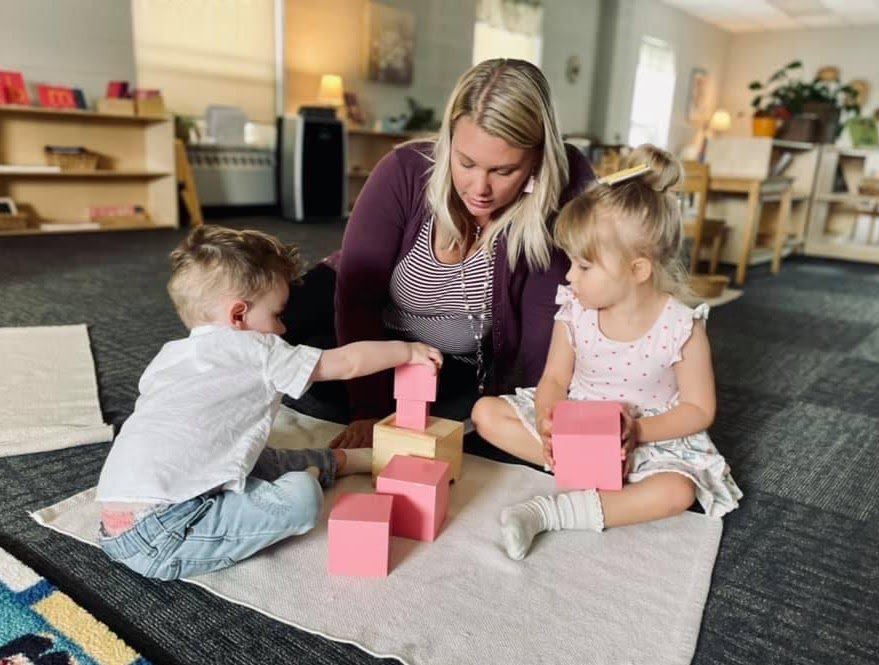
Sensorial
The Purpose of the sensorial area is to aid the child in developing the ability to reason and use their intellect. The sensorial materials serve as a scientific guide for the child to clarify, catalog, classify, and put the impressions of their environment in order. The sensorial activities aim not simply to provide the child with sensory experiences. Sensorial materials is an activity that isolates one particular sense and highlights specific qualities, thus allowing the child to refine their understanding.
The child first explores materials with his senses, simply enjoying the movement and the feel, smell, sound, touch, or taste of them. Through continued exploration, the child makes comparisons, notices differences, and sorts and sequences the materials. The child sees new relationships and develops the ability to follow logical and orderly thought processes.
The child’s work in this area can produce excellent results:
Expands neural pathways and aids in neurological organization
Training and refinement of the senses and thus building the intellect
Creates order and clarity in the child’s world
Develops concentration, coordination, order and independence
Develops an appreciation for beauty and attention to detail and encourages creativity
It can assist observing adults in the early detection of defects in the function of the senses
Pink Tower
Visually appealing and engaging, the Pink Tower is a foundational material from the Sensorial Area of the Montessori classroom. The stacking cubes range from 1 cm and increase by 1 cm until they reach a size of 10 cm. These stacking cubes use visual discrimination, coordination, and precision. The learner will bring each cube to the rug and lay them beside each other. Then, they will begin to build a tower from biggest to smallest; if an error is made, the learner will be able to identify the error and self-correct quickly.
The Knobless Cylinders
The Knobless Cylinders are a part of our sensorial materials, which support our learner's understanding of the Base Ten system, and our learners are encouraged to explore the boxes. There are four boxes, each containing a set of cylinders with varying relationships; in one box, the cylinders are the same height but different widths. In another, the widths are identical, but the height is different. In another box, the width decreases as the height increases, and in the last box, the width increases while the height decreases



